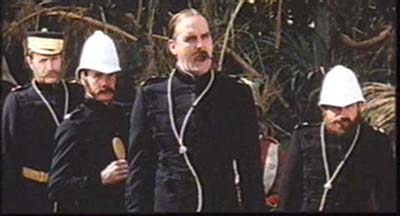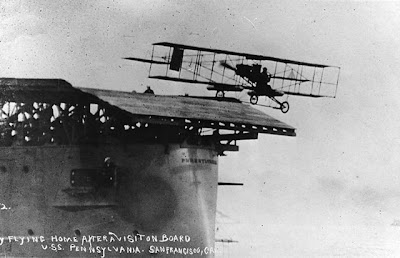Those wallahs at Warlord Games are showing off the 3 ups of the plastic Zulus they're going to produce in conjunction with the memsahibs at Empress Miniatures. Look jolly good and perfect for Little Wars games of Rourke's Drift. Ah, Men of Harlech, makes one's moustache twirl!!
Whats the humdrum about Chaps? Adventures into Victorian Science Fiction and Steampunk with ramblings about Aeronefs, Dirigibles, Land Ironclads, Anarchists, Dinosaur Hunting, Terranefs, Aquanefs, Mad Scientists, and all manner of electric contraptions and steam conveyances. It may not make sense, but there will be claret and a nice cheese board at the end. Tally-Ho and "Vôtre dans une sauce au vin blanc!"
Friday 27 May 2011
Thursday 26 May 2011
Martian Walkers for Little Wars Games
What ho chaps! Good news for those of you that like to play that Little Wars game written by that Wells fellah with your toy soldiers because thanks to those jolly nice colonial chappies at Eureka Miniatures have released a 16 inch high Martian Fighting Machine and one of those Cephalopod wallahs that piloted the bally things! Brings back the memories of those terrible days I can tell you, off to have a snifter of brandy or two...
Sunday 22 May 2011
DW Brittania Cruiser
Allan has finished this rather lovely DW Cruiser, from the Kingdom of Brittania
See more at his blog here:
http://onepainterscrusade.blogspot.com/2011/02/kingdom-of-britannia-finished-cruiser.html
See more at his blog here:
http://onepainterscrusade.blogspot.com/2011/02/kingdom-of-britannia-finished-cruiser.html
Monday 16 May 2011
150 Followers!
In the last few days, Yours in a White Wine Sauce has ticked over to 150 Followers:
Thanks for the support and encouragement everyone!
Huzzah to Sylvain, who was our 150th member -chalk up a bottle of celebratory claret on my mess account dear chap!
Thanks for the support and encouragement everyone!
Huzzah to Sylvain, who was our 150th member -chalk up a bottle of celebratory claret on my mess account dear chap!
Sunday 15 May 2011
Deep Sea Divers
Newly released by Foundry, as part of their Victoriana range:
http://wargamesfoundry.com/historical_ranges/single_packs/victoriana/victoriana/deep_sea_divers_vc021/?comprisesofback=31726
http://wargamesfoundry.com/historical_ranges/single_packs/victoriana/victoriana/deep_sea_divers_vc021/?comprisesofback=31726
Saturday 14 May 2011
Plastic Zulu War Miniatures Previewed
Warlord Games have posted pictures of the work-in-progress British 3 ups from the forthcoming 28mm plastic Zulu War range they will be producing in conjunction with Empress Miniatures...
Wednesday 11 May 2011
Conflict on Mars released
The new Mars supplement for When the Navy Walked has now been released as a pdf download:
When the Navy Walked: Conflict On Mars! is a miniature ruleset that covers an alternate history set during the colonization of the Red Planet of Mars by the Great Powers. As the Great Powers vie for control of the planet's few resources and the Red Planet's native Red, Green and White Martians make tenuous treaties with them, something older stirs in the depths of the planet. Something dark and terrible that has been hidden for eons in forgotten creches locked in a stasis of bloody dreams of conquest.
The Overlords are awakening from their deep slumber and returning to the planet's surface once again! The Gray servants of the Skvani are gathering their Tripod War Machines! The future of Mars bears dark days of war!
WTNW is more than just a Victorian Science Fiction game. It is a springboard for imagination and a high-level game of tactics and battles set amongst a 'what if' world inspired by the classic authors of Victorian Science Fiction and Retro Science Fiction. In WTNW, players take the reins and command massive armies of men, fantastic beasts and steam-driven vehicles of leviathan proportions. In the end, the thunder that cascades across the battlefield to settle in the souls of the fighting men will only be assuaged with the assistance of the landship.
This Conflict on Mars supplement is not a stand-alone game. You will require the full version of When the Navy Walked, Second Edition, to play the game. So grab your goggles and your Aethertech, and get ready for a good time filled with steam and adventure!
More here: http://www.wargamevault.com/index.php?manufacturers_id=3206&filters=0_0_0
When the Navy Walked: Conflict On Mars! is a miniature ruleset that covers an alternate history set during the colonization of the Red Planet of Mars by the Great Powers. As the Great Powers vie for control of the planet's few resources and the Red Planet's native Red, Green and White Martians make tenuous treaties with them, something older stirs in the depths of the planet. Something dark and terrible that has been hidden for eons in forgotten creches locked in a stasis of bloody dreams of conquest.
The Overlords are awakening from their deep slumber and returning to the planet's surface once again! The Gray servants of the Skvani are gathering their Tripod War Machines! The future of Mars bears dark days of war!
WTNW is more than just a Victorian Science Fiction game. It is a springboard for imagination and a high-level game of tactics and battles set amongst a 'what if' world inspired by the classic authors of Victorian Science Fiction and Retro Science Fiction. In WTNW, players take the reins and command massive armies of men, fantastic beasts and steam-driven vehicles of leviathan proportions. In the end, the thunder that cascades across the battlefield to settle in the souls of the fighting men will only be assuaged with the assistance of the landship.
This Conflict on Mars supplement is not a stand-alone game. You will require the full version of When the Navy Walked, Second Edition, to play the game. So grab your goggles and your Aethertech, and get ready for a good time filled with steam and adventure!
More here: http://www.wargamevault.com/index.php?manufacturers_id=3206&filters=0_0_0
Wednesday 4 May 2011
The Birth of Naval Aviation
|
Subscribe to:
Posts (Atom)

An exploration of debauchery, vice and other reasons to be a man!




















